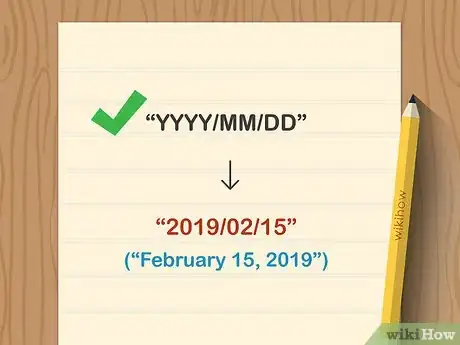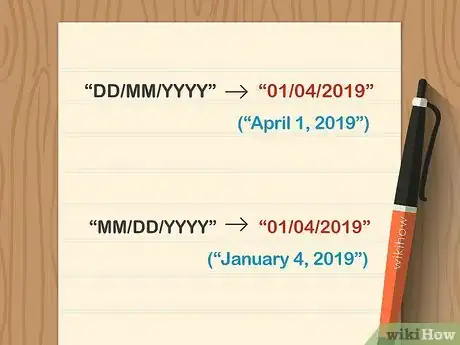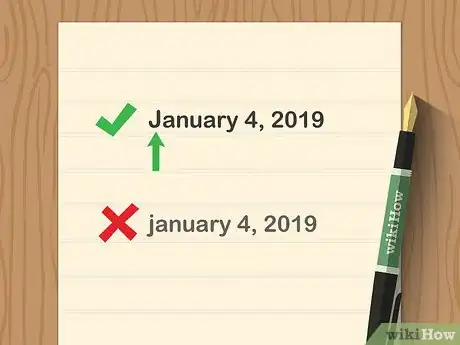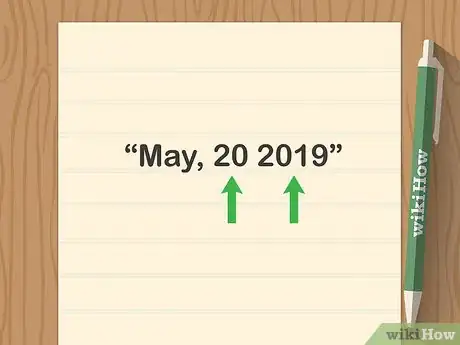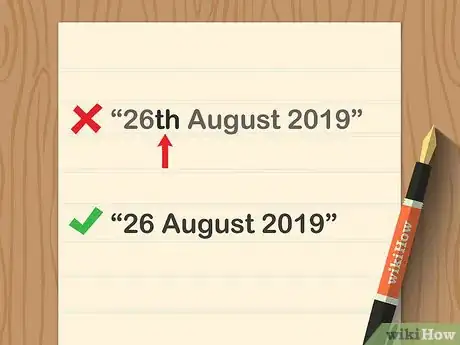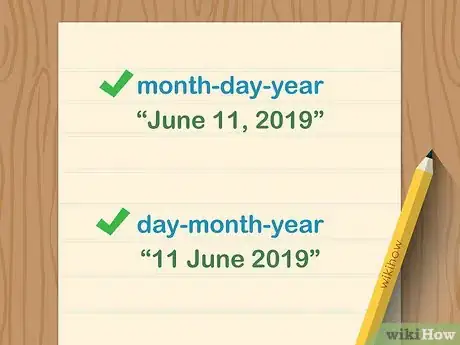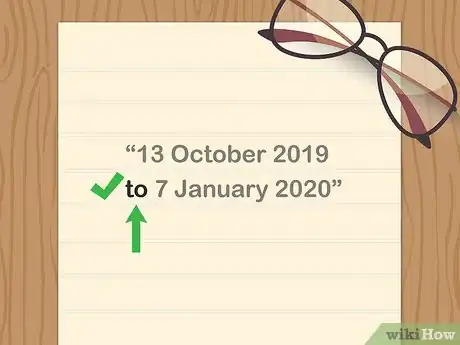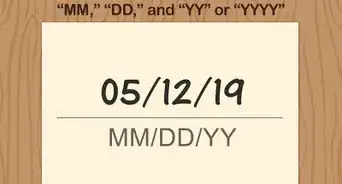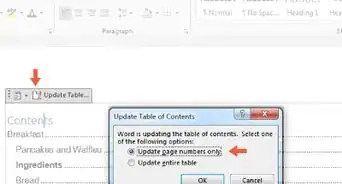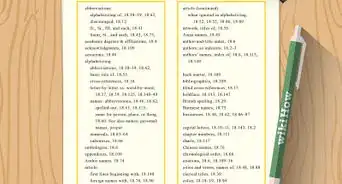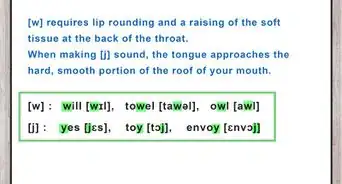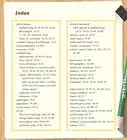This article was co-authored by wikiHow Staff. Our trained team of editors and researchers validate articles for accuracy and comprehensiveness. wikiHow's Content Management Team carefully monitors the work from our editorial staff to ensure that each article is backed by trusted research and meets our high quality standards.
There are 7 references cited in this article, which can be found at the bottom of the page.
This article has been viewed 71,933 times.
Learn more...
Canadian dates can be tricky because there are several accepted formats of writing the date! Generally, numerical dates are used when you fill out forms or if you're writing a document and you are short on space. To write the date using numbers, the Government of Canada only endorses the YYYY-MM-DD format.[1] While some people still use the DD/MM/YYYY and MM/DD/YYYY formats, it's best to avoid them, since they are easily confused.[2]
Alternatively, you can use a combination of words and numbers to write the date. In this instance, the month is written as a word and the day and year are written using numbers.
Steps
Using Numbers
-
1Use YYYY-MM-DD to write the date in the international standard format. This is the most common way to write a numerical date in Canada. If you see a form indicating that the date must be written in this format, this means that you write the year (YYYY) first, the month (MM) second, and the day (DD) last. Make sure to separate each field with a hyphen or slash. For example, “2019-02-15” is 15 February 2019.[3]
- YYYY/MM/DD is the international standard format for writing dates. This format is accepted in most countries.[4]
- Most Canadian government forms require the date to be written in this format.
-
2Avoid DD/MM/YYYY or MM/DD/YYYY, since they are easily misunderstood. In both formats, DD refers to the day, MM to the month, and YYYY to the year. Using the date “01/04/2019”, in DD/MM/YYYY format this means 1 April 2019, but in MM/DD/YYYY format this means 4 January 2019![5]
- Without indicating whether the DD/MM/YYYY or MM/DD/YYYY format is used, it’s easy to misinterpret the date. This is because by just reading the date numerically, you don’t know which number indicates the day and which number indicates the month.[6]
Using Words and Numbers
-
1Write the first letter of the month using a capital letter. It’s important to always write the title of the month using a capital letter for the first letter to keep your work looking professional. For example, always write "July" rather than “july” or "September" instead of “september”. This is because the names of the months are proper nouns.[7]
- You don’t need to capitalize every letter in the month name, just the first.
- You can also abbreviate the name of the month if you have limited space. For example, “Jan” would be an appropriate substitute for writing January.
Did You Know? If you're writing the date in French, which is commonly spoken in Canada, do not capitalize the name of the month. For instance, instead of “4 Janvier 2019”, you would write “le 4 janvier 2019”.[8]
-
2Use numbers to write the day and year. When you write the date on documents such as reports, letters, or assignments, it’s best to write the day and year using numbers rather than letters. For example, don’t write “the twentieth of May, two thousand and nineteen”, but instead stick to “May 20, 2019” or “20 May 2019”.[9]
-
3Avoid using ordinal indicators such as “th”, “st”, “rd”, or “nd”. When writing Canadian dates, using an ordinal indicator isn’t necessary, so you can just leave it out to keep the date looking concise. This means that you don’t need to write “August 26th, 2019” and instead you can just keep it as “August 26, 2019” or “26 August 2019”.[10]
- This helps the date to look neater and more streamlined.
-
4Write out the date in words unless a different format is specified. You can use either the month-day-year or day-month-year sequence. For example, “June 11, 2019” or “11 June 2019” would be an appropriate format to write the date for letters, reports, and assignments.[11]
- The day-month-year sequence is best for documents that have large numbers of dates, since it needs fewer commas. If the month comes first, write a comma after the day, but leave out the comma if the day comes first. A comma always follows the year when the date is written as part of a sentence.[12]
-
5Write “to” when you’re writing a date range. If you need to write down a range between 2 different dates, use the word “to” in between the dates. An example of using this format is “13 November 2019 to 7 January 2020”.[13]
- In prose, it’s recommended to use the word “to” instead of using a dash symbol. If you use a dash, use an en dash (–) instead of a hyphen (-).
References
- ↑ https://www.btb.termiumplus.gc.ca/tpv2guides/guides/favart/index-eng.html?lang=eng&lettr=indx_titls&page=9geHWsOpC7ZI.html
- ↑ https://www.btb.termiumplus.gc.ca/tcdnstyl-chap?lang=eng&lettr=chapsect5&info0=5.14
- ↑ https://www.btb.termiumplus.gc.ca/tpv2guides/guides/favart/index-eng.html?lang=eng&lettr=indx_titls&page=9geHWsOpC7ZI.html
- ↑ https://www.cl.cam.ac.uk/~mgk25/iso-time.html
- ↑ https://www.cbc.ca/news/canada/proposed-legislation-aims-to-settle-date-debate-1.3407640
- ↑ https://www.scc.ca/en/news-events/news/2018/getting-same-page-when-it-comes-date-and-time
- ↑ https://www.canada.ca/en/treasury-board-secretariat/services/government-communications/canada-content-style-guide.html#wp4-7
- ↑ https://www.btb.termiumplus.gc.ca/tpv2guides/guides/clefsfp/index-fra.html?lang=fra&lettr=indx_catlog_d&page=9lcOojjUrxt8.html
- ↑ https://www.btb.termiumplus.gc.ca/tcdnstyl-chap?lang=eng&lettr=chapsect5&info0=5.14
- ↑ https://www.canada.ca/en/treasury-board-secretariat/services/government-communications/canada-content-style-guide.html#wp4-7
- ↑ https://www.btb.termiumplus.gc.ca/tpv2guides/guides/favart/index-eng.html?lang=eng&lettr=indx_titls&page=9geHWsOpC7ZI.html
- ↑ https://www.btb.termiumplus.gc.ca/tpv2guides/guides/favart/index-eng.html?lang=eng&lettr=indx_titls&page=9geHWsOpC7ZI.html
- ↑ https://www.canada.ca/en/treasury-board-secretariat/services/government-communications/canada-content-style-guide.html#wp4-7
